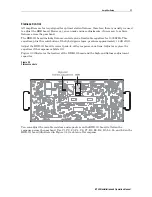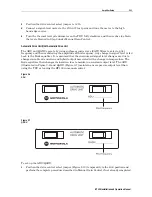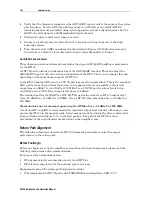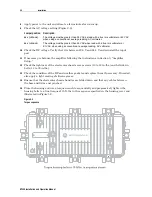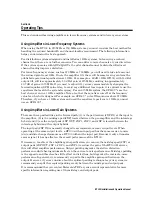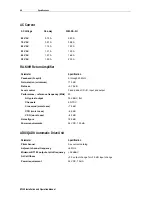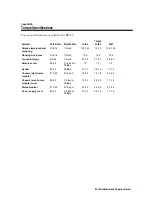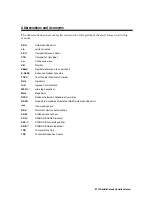
Bench
Testing
4-3
BT100 Installation and Operation Manual
1
Perform steps 1 through 6 in Measuring Forward Gain above.
2
Estimate the ambient temperature and find the required gain reserve by referring to
Table 3-3. Reduce the gain at the highest frequency by the amount given in the table.
Example:
The ambient temperature is 70
°
F. The table indicates that the required gain reserve is 4 dB.
Reduce the gain by 4 dB.
The operational gain is the sum of the measured gain after performing Step 2, plus all
losses, such as power combiner, cable loss, equalizer, and cable simulator.
The sweep response is essentially flat at this point. If the response exhibits tilt, the cable
equalizer must be changed. Install a higher equalizer value if the gain is greater at the low
frequencies; install the next lower equalizer value if the gain is less at the low-end
frequencies.
3
Measure the gain excursions from an average value within the bandpass.
The result is the peak-to-valley flatness. Some improvement is possible by adjusting the
flatness controls on the BDR board as described in Section 3, “Amplifier Setup,” Flatness
Control. Figure 3-4 illustrates the location of these controls on the BDR.
Testing Return Gain and Response
After configuring the return path, you can test the return bandpass to ensure compliance with
specifications. When testing the return path, remember that it is a flat response. Therefore, the
cable simulator must remain in the test set-up and must remain set to the same cable
equivalent as in the forward sweep test. This provides an approximate indication of the
frequency response, which you can achieve in the field.
To test for return gain and response:
1
Reconnect the test equipment and switch the
sweep input
and
sweep output
leads of the
BT100 under test to be opposite of the connection shown in Figure 4-1.
2
Remove the 20 A fuse (F
1
) at the input port and replace the 20 A fuse (F
2
, F
3
, F
4
, or F
5
) at
the output port (Figure 2-9) before you apply power.
3
Re-adjust the test equipment to sweep from 4 MHz through the maximum return band
frequency plus 10 MHz (Example – 50 MHz for S-split).
The expected response is flat. Any tilt, which is due to the return equalizer, must average
out to a flat response in a cascade of amplifiers. A slope adjustment is not available in the
return bandpass.
4
Measure the gain at the maximum return band frequency (example 40 MHz for S-split).
The amplifier gain is the sum of: the measured gain, the insertion loss of the return cable
equalizer at the maximum return band frequency, the insertion loss of the power combiner,
any pads installed in either the input or output pad locations, plus the cable simulator loss
at the maximum return band frequency. The amplifier gain must meet advertised
specifications for the return path.





